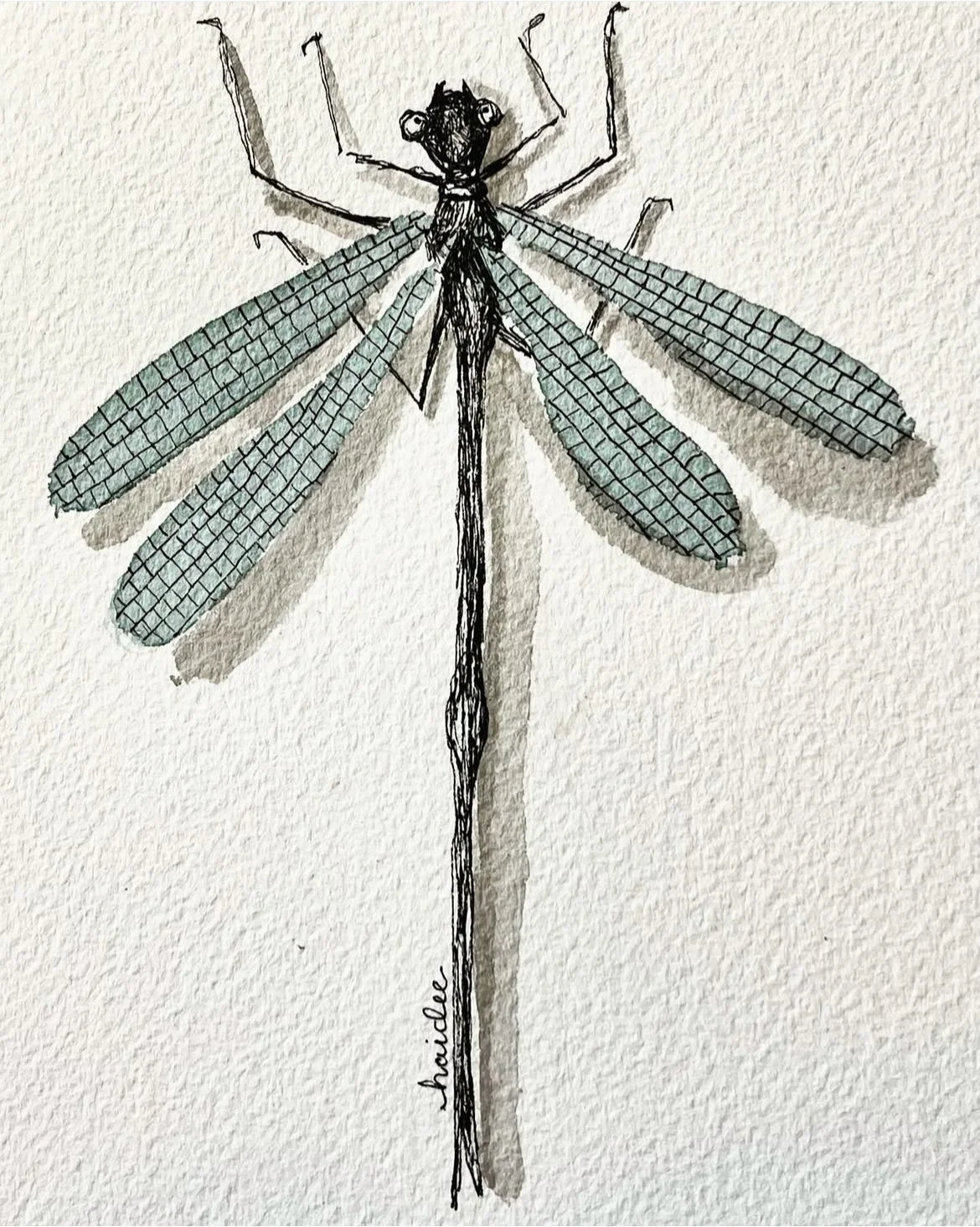 Image 1 of 1
Image 1 of 1


Specimen No. 731 The Green Hour Lancet
Specimen No. 731
Name: The Green-Hour Lacelet | Aetheroptura delicata viridora
Observed by: Elsbeth Carmody, amateur entomologist and moss-gardener
Date of Collection: 3 May 1919
Locality: Reedmarsh Bluffs, Camas, Washington
Catalog No. FD - 19 - 731
—
The Green-Hour Lacelet is said to have been first seen in the waning afternoon light, its wings catching what little remained of the sun in veils of soft celadon shimmer. Nestled among the sedges and low thickets of Reedmarsh Bluffs, just outside Camas, Washington, the insect moved so delicately it was mistaken for dust at first—until it hovered, impossibly still, above a freshwater mirror cupped in basalt. Local myth tells of the “green hour” just before dusk when certain light-borne species, unseen the rest of the day, make themselves known to those who wait without speaking. Elsbeth Carmody, chronic insomniac and self-styled “collector of gentle things,” waited there for five days straight before one alighted on the edge of her travel journal.
Unlike more robust dragonflies, the Lacelet’s wings curve like miniature glass paddles—translucent, ovate, and netted in an emerald grid. The tail is impossibly narrow, like the stem of a reed pulled taut. Its eyes are round and widely set, imparting an expression of perpetual astonishment. Carmody noted in her sketchbook that the insect “carried no weight, not even of its own being, and bent no leaf upon landing.” This, she insisted, was evidence of a creature whose internal architecture was more air than matter, possibly a variant adapted to the moisture-thick mists that rose each spring from the Columbia River basin.
Specimens were never again caught or photographed, and the one Carmody secured was accidentally swept away when her husband mistook her mounting tray for a piece of toast. All that remains is her precise ink drawing—rediscovered in a cedar box marked “do not disturb”—and the single fragile notation: Aetheroptura delicata viridora. Contemporary taxonomists remain divided as to whether the Lacelet was ever real, or merely an invention of Carmody’s sleepless mind. But among certain naturalist circles in the Pacific Northwest, the Green-Hour Lacelet is still whispered about, especially on soft evenings when the light turns green and the air feels thinner than usual.
Obviously, the entonologists at Fly Design have no doubt.
Note: High quality archival glicée print on acid-free paper, a method that creates fine art reproductions with exceptional color accuracy and longevity. Pigments-based inks are designed to resist fading and discoloration and capture the finest details and subtle color variations with great precision.
Housed in a 4×6” crystal-clear acrylic specimen block, its 1” depth allows freestanding display. Each piece is designed to exhibit on desk or shelf..
Fly Design uses a practice known as entonology — the study of fictitious insects — to reimagine the natural world through scientific storytelling and poetic design.
Specimen No. 731
Name: The Green-Hour Lacelet | Aetheroptura delicata viridora
Observed by: Elsbeth Carmody, amateur entomologist and moss-gardener
Date of Collection: 3 May 1919
Locality: Reedmarsh Bluffs, Camas, Washington
Catalog No. FD - 19 - 731
—
The Green-Hour Lacelet is said to have been first seen in the waning afternoon light, its wings catching what little remained of the sun in veils of soft celadon shimmer. Nestled among the sedges and low thickets of Reedmarsh Bluffs, just outside Camas, Washington, the insect moved so delicately it was mistaken for dust at first—until it hovered, impossibly still, above a freshwater mirror cupped in basalt. Local myth tells of the “green hour” just before dusk when certain light-borne species, unseen the rest of the day, make themselves known to those who wait without speaking. Elsbeth Carmody, chronic insomniac and self-styled “collector of gentle things,” waited there for five days straight before one alighted on the edge of her travel journal.
Unlike more robust dragonflies, the Lacelet’s wings curve like miniature glass paddles—translucent, ovate, and netted in an emerald grid. The tail is impossibly narrow, like the stem of a reed pulled taut. Its eyes are round and widely set, imparting an expression of perpetual astonishment. Carmody noted in her sketchbook that the insect “carried no weight, not even of its own being, and bent no leaf upon landing.” This, she insisted, was evidence of a creature whose internal architecture was more air than matter, possibly a variant adapted to the moisture-thick mists that rose each spring from the Columbia River basin.
Specimens were never again caught or photographed, and the one Carmody secured was accidentally swept away when her husband mistook her mounting tray for a piece of toast. All that remains is her precise ink drawing—rediscovered in a cedar box marked “do not disturb”—and the single fragile notation: Aetheroptura delicata viridora. Contemporary taxonomists remain divided as to whether the Lacelet was ever real, or merely an invention of Carmody’s sleepless mind. But among certain naturalist circles in the Pacific Northwest, the Green-Hour Lacelet is still whispered about, especially on soft evenings when the light turns green and the air feels thinner than usual.
Obviously, the entonologists at Fly Design have no doubt.
Note: High quality archival glicée print on acid-free paper, a method that creates fine art reproductions with exceptional color accuracy and longevity. Pigments-based inks are designed to resist fading and discoloration and capture the finest details and subtle color variations with great precision.
Housed in a 4×6” crystal-clear acrylic specimen block, its 1” depth allows freestanding display. Each piece is designed to exhibit on desk or shelf..
Fly Design uses a practice known as entonology — the study of fictitious insects — to reimagine the natural world through scientific storytelling and poetic design.